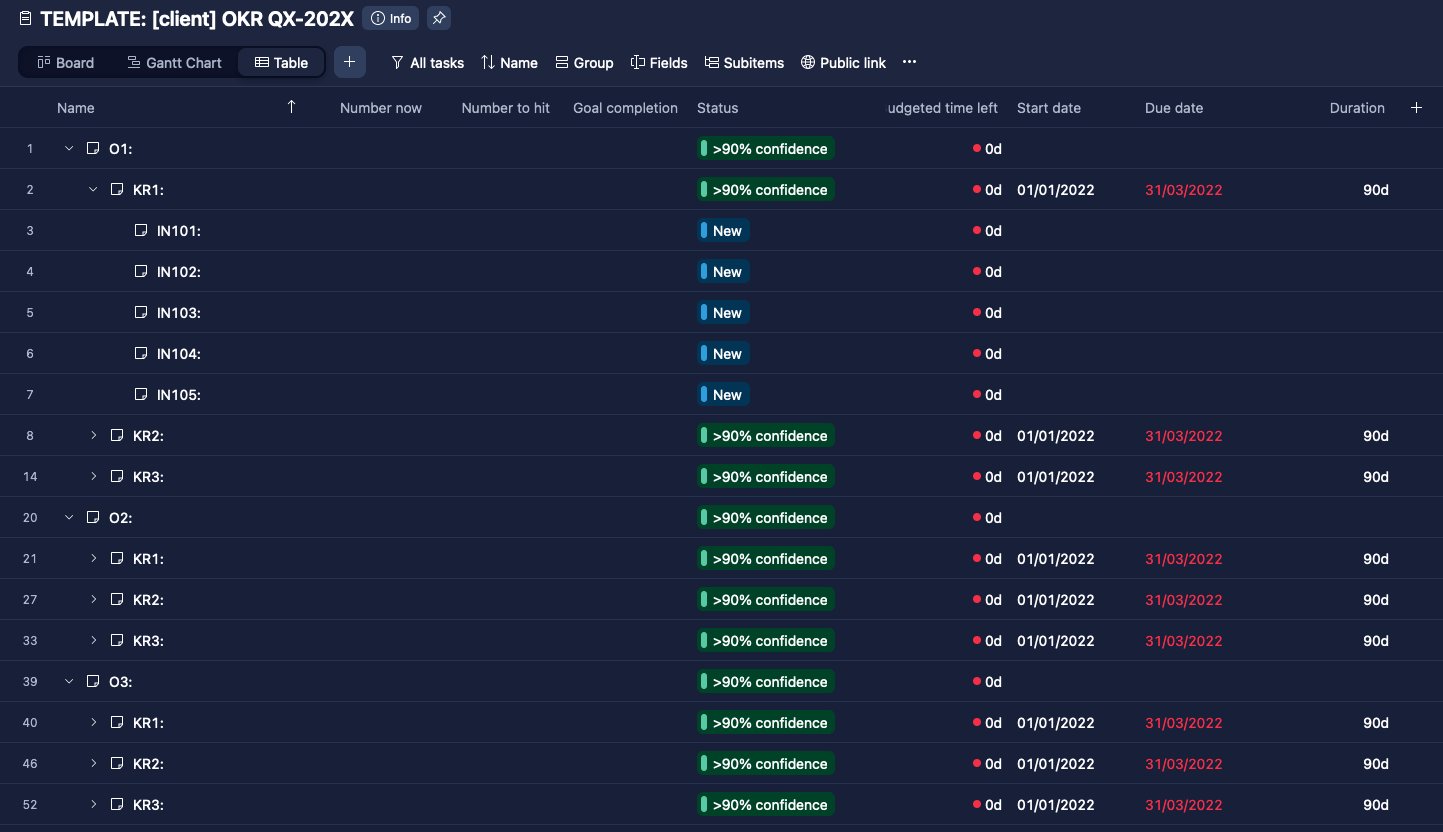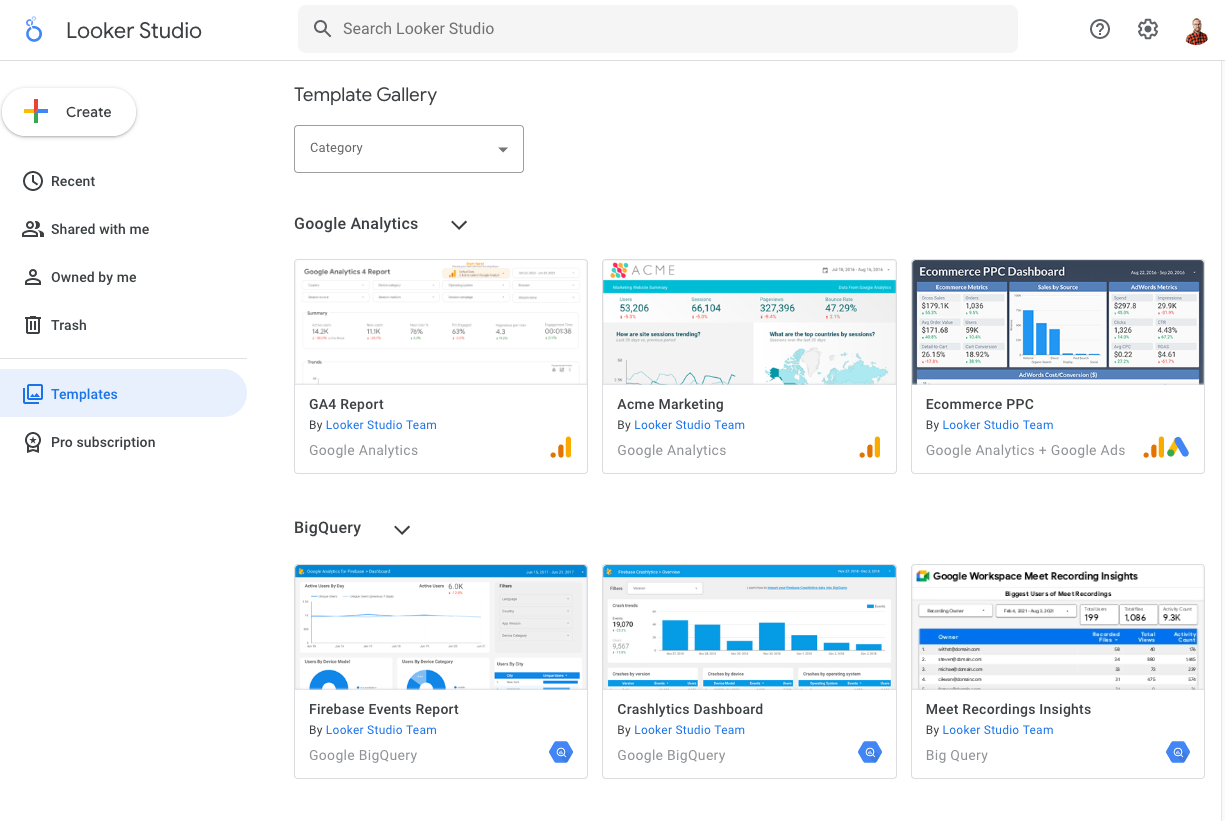Is it difficult to track marketing development? Does the marketing report not correspond to sales figures, or does it fall behind when monthly results are reported? The problem often lies in the fact that marketing activities are reported as independent entities without commercial context or business-related objectives. When the entire framework of digital commercial development is brought together, the result is better reporting that serves the needs of both sales and marketing. In this article, we’ll go through step by step how to proceed in building such a framework.
The importance of measuring B2B marketing can’t be emphasized enough. Knowing how much money is being spent on marketing and what results are achieved is crucial. Additionally, it’s interesting to see how prospects or customers behave and how to adjust marketing activities based on their behavior.
1. Clarify business, marketing, and sales objectives
The first and most crucial step is missing from the majority of marketing reports. The main question is, what are the business objectives and their counterparts for marketing and sales? Only by seeking answers to this question can metrics be obtained that can lead to development or interest in business management.
From the B2B marketing and sales perspective, there can be several business-related strategic objectives, often 1–3. Examples of such objectives include:
Strategic Objective 1.
Business Objective: Revenue of XX euros per year
Sales Objective: Sales from new customers of XX euros per year
Marketing Objective: Requests for proposals from new customers of XX euros per year
Strategic Objective 2.
Business Objective: Increase domestic market share to XX percent
Sales Objective: Growth of XX percent annually from additional sales to existing customers
Marketing Objective: Strengthening thought leadership within the target audience
Strategic Objective 3.
Business Objective: Increase international business by XX percent by year YY
Sales Objective: Initiating international sales processes and building a partnership network
Marketing Objective: Achieving customer understanding and acquiring leads from potential market areas

2. Define KPI metrics for different activities and stages
Key Performance Indicators (KPIs), or the most important metrics for monitoring development, can be derived from objectives. Using marketing metrics derived from each objective is not always possible, so it’s good to define auxiliary metrics if the primary metric is unavailable.
KPI metrics should be considered separately for marketing, sales, and different stages of customer engagement based on suitable tactical measures. Example metrics for different stages may include:
Customer acquisition stage
Click-through rate / reaction rate / view rate (=interest metrics) / audience reach percentage (B2B: if the audience can be narrowly defined)
What is revealed: Audience interest in the channel, audience relevance, and potential
Customer conviction stage
Dwell time (qualitative metrics of page quality) / micro-conversions / conversion rate
What is revealed: How potential customers encountered are encouraged to return and progress on the sales path is reinforced.
Customer purchase decision stage
Leads, lead cost (CPA), media cost per lead (mCPA), sales-qualified leads (SQL), and visits leading to sales actions from identified key accounts
What is revealed: How encountered customers/key accounts progress towards making a purchase with the support of marketing and how efficiently they convert into leads and contacts for sales.
Note! Often, a company’s management assesses the effectiveness of marketing solely based on the number of leads and the cost per lead. However, only about a third of all B2B marketing activities cover the end of the funnel, so one metric alone does not provide a good picture of the actual situation. Therefore, defining a metric linked to business goals for each stage is vital to creating a better overall picture of marketing development.
What is a sufficient scope of measurement
There is no straightforward rule for how much or what to measure. Important metrics are always case-specific, but some are practically always useful.
For example, for website analytics, fairly certain choices include page views, bounce rate, time spent on pages, and events. The most obvious choices for advertising platforms are clicks, ad impressions, conversions, and budget.
As mentioned earlier, these metrics are usually the ones that are closely monitored, but they are certainly not the only ones to be tracked. Depending on the platform, these specific metrics may not even be available. Additionally, the metrics used are influenced by what exactly is being measured and how.
3. Ensure ecosystem functionality and data reliability
Once the marketing metrics are selected, it is crucial to ensure their reliability to draw credible reporting and conclusions. Validation should be done by comparing data from different sources and by comparing results with “common sense” and, for example, auxiliary metrics. A rule of thumb is to remember that if the results of a metric seem too good to be true, they probably are. Data validation should always be done, and one should never blindly trust that once checked, the metrics will always hold true, as changes to the ecosystem can affect the accuracy of the data.
Tip: When errors in data are noticed, they should be openly communicated as soon as the extent and cause of the problem are known. It is also essential to explain what the issue has affected and how it will be resolved in the future (can the same metric be “fixed”, or is another measurement method chosen instead). This way, credibility is maintained despite the fact that the data may have momentarily shown incorrect results. Never conceal errors or report results without knowing their accuracy, as this undermines the credibility of the entire marketing effort.
Take the future into account
Since websites, applications, and advertising platforms are usually measured with some ready-made measurement tool, there are few ways to influence what is measured. Almost all such tools measure everything they can.
When you add a tracking code to your website, you must accept that everything visitors do is recorded in that service. In addition to the previously mentioned things, many marketing metrics are measured, whether you want them to be or not. Most of these metrics are likely unnecessary for you, although some of them may become necessary later. In such cases, it is of course, beneficial that they have already been measured.
Measuring “unnecessary” things can sometimes benefit marketers. However, it is impossible to predict whether a metric will later become necessary. As mentioned, what is unnecessary and what is not is always case-specific.
Limiting the pages on which tracking codes are placed can restrict the scope of measurement, but this does not affect the number of metrics. In some cases, it may be justified to exclude certain pages from measurement completely, but such cases are rare.
From the user’s perspective, keeping your feet on the ground is generally important. Even though it may be possible to measure everything, is it necessary and suitable? Visitors are given relatively few options regarding how they are tracked and what their actions are recorded. Usually, this is either-or; either the visitor allows tracking or they don’t.
4. Bring data together for analysis
Instead of trying to limit the metrics used, it is advisable to focus on the essential metrics. Customized reports and metrics are the best way to achieve this.
Many analytics platforms offer the possibility of creating customized reports. Initially, these reports can include almost any data collected by the platform. However, different metrics and dimensions must be compatible.
In order to properly compare and evaluate data, such as relationships between channels, it needs to be brought together for analysis. For example, using the free Looker Studio makes it easy to collect data from different data sources into one place. There are also other tools for data collection, and it’s essential to choose the one that best suits your needs (often, integrations may require payment). Referring back to the previous section, it’s always important to verify the accuracy of the data, at least during the creation of metrics, directly from the original data source.

Bringing data together allows, for example, different data sources, such as marketing channels from Meta and Google, to be brought onto the same graph. This facilitates both analysis, monitoring of development, and reporting.
Choosing the right marketing metrics is the most challenging part of a customized measurement and reporting system. While they can certainly be updated later, careful planning can effectively avoid unnecessary work.
5. Create visual metrics for monitoring development
Once the metrics have been defined and the data brought together for processing, a visual metric system must be built to monitor its development. The type of metric suitable for monitoring each key figure is entirely case-specific and depends on factors such as the recipient. It is the analyst’s task to find meaningful things from the data and present them in such a way that observations are clearly visible without losing context. Therefore, the same metric may sometimes need to be examined in different formats, such as tables and graphs. Visual means should generally follow commonly used norms and be kept as simple as possible. This way, they are most easily understandable for every recipient, even without explanation.

6. Trim unnecessary information from reporting
Report only what is essential and only to the extent necessary. Excess information easily causes even relevant information to get lost, and the recipient loses interest. Information should be organized so that the most important thing comes first and deeper metrics or analyses come later, which can be explored further if necessary. Here, too, it’s important to consider the recipient for whom the reporting is done. In addition to the recipient’s position affecting the quality and form of reporting, personal preferences should also be taken into account through feedback. For example, some people may understand data better in a table, others in a graph, and some may prefer simple visualizations of the most important results and insights.
After you are satisfied with the reporting, it’s a good idea to have a colleague review it and ask them to trim (or at least hide) all secondary data so that only 1-3 most significant insights supporting charts remain.
7. Provide interpretation/explanation alongside metrics
Remember that as a marketer, you are the best expert to analyze results and insights and what they imply. Therefore, don’t just settle for presenting statistics, but always consider the following:
- What has been done and led to these results, and why?
- What do the results tell us, and can we learn anything meaningful from them?
- What follow-up actions can be derived from these insights, and what are they aimed at?
By analyzing and thinking about these questions in advance, you make decision-making easy for the recipient and present yourself as competent and knowledgeable. Remember, it’s not just “what” has happened that matters, but “why” it has happened and what consequences follow from it.
In conclusion: Demand more from your marketer or marketing partner
Whether the reporting responsibility lies with a partner or an in-house expert, it’s worthwhile to demand answers to the above questions from a marketer if they cannot present them themselves. There may be reasons for caution, but without analysis, learning, and bold testing, there will be no development in marketing. However, the marketer is the best expert to explain what has really happened behind the results and understand behaviors, for example, at the customer interface.
Reporting is a dynamic process that evolves with the company and marketing development. Therefore, one should not expect a finished product immediately or ever, but always critically consider the necessity and sufficiency of activities. This is a prerequisite for growth.
Also read:
How to begin measuring your marketing efforts
Digital marketing data analytics – tools and tips
